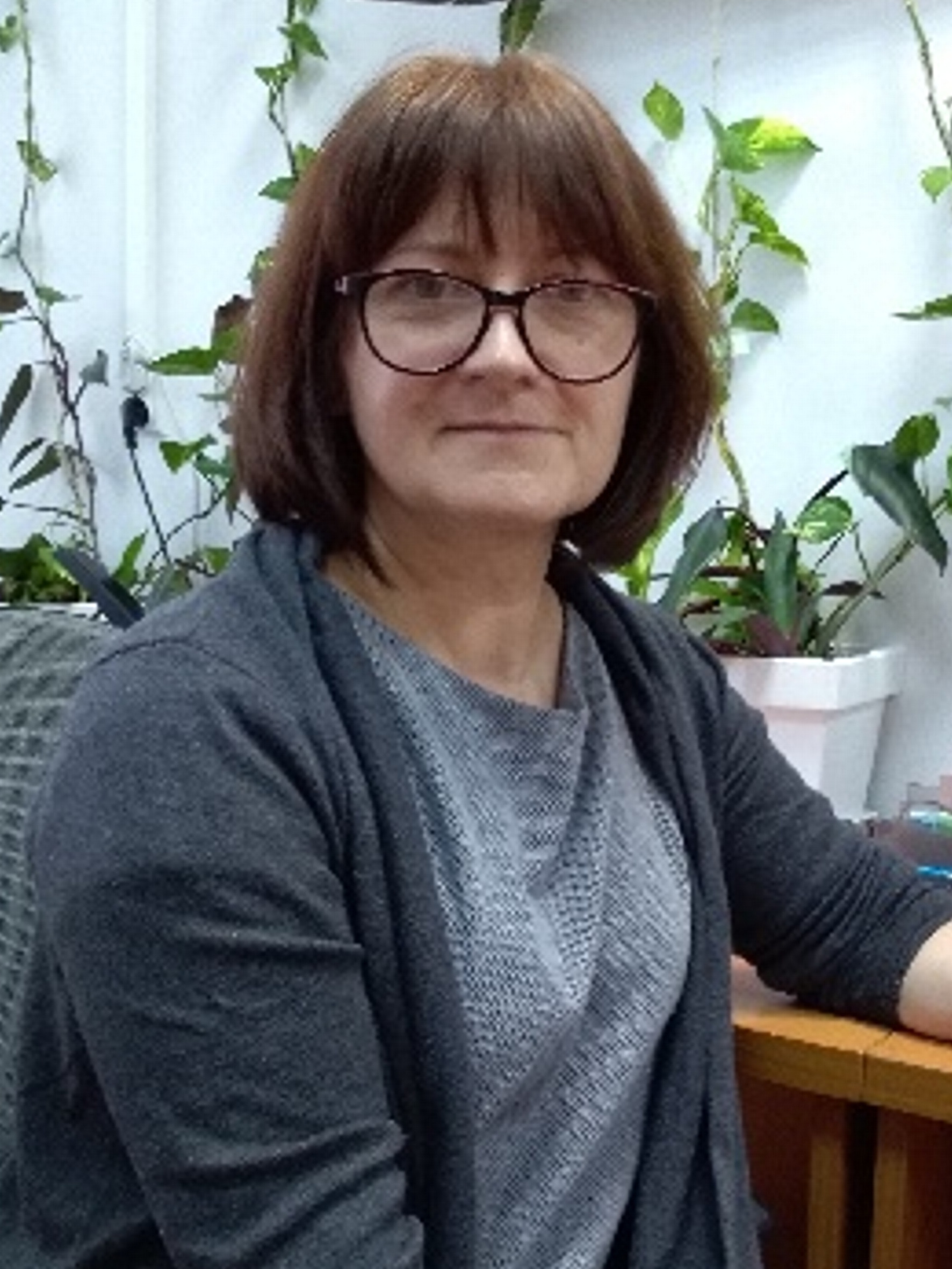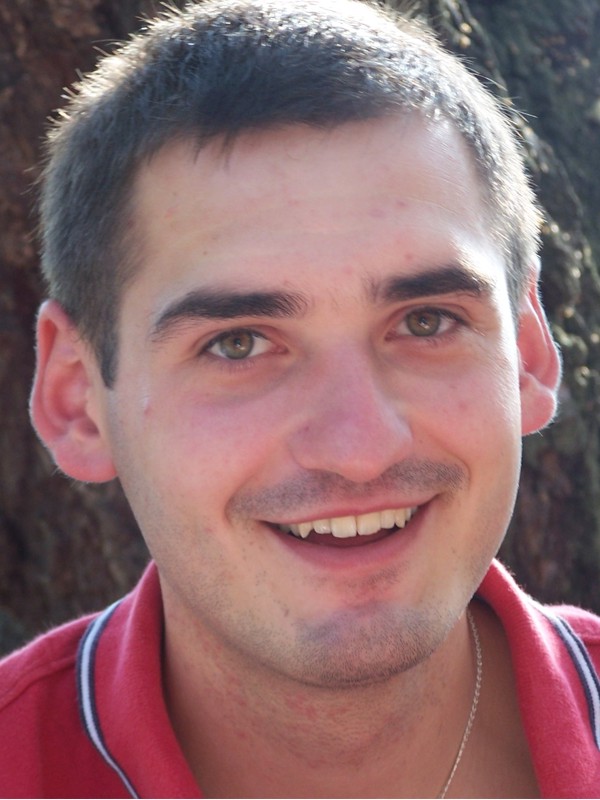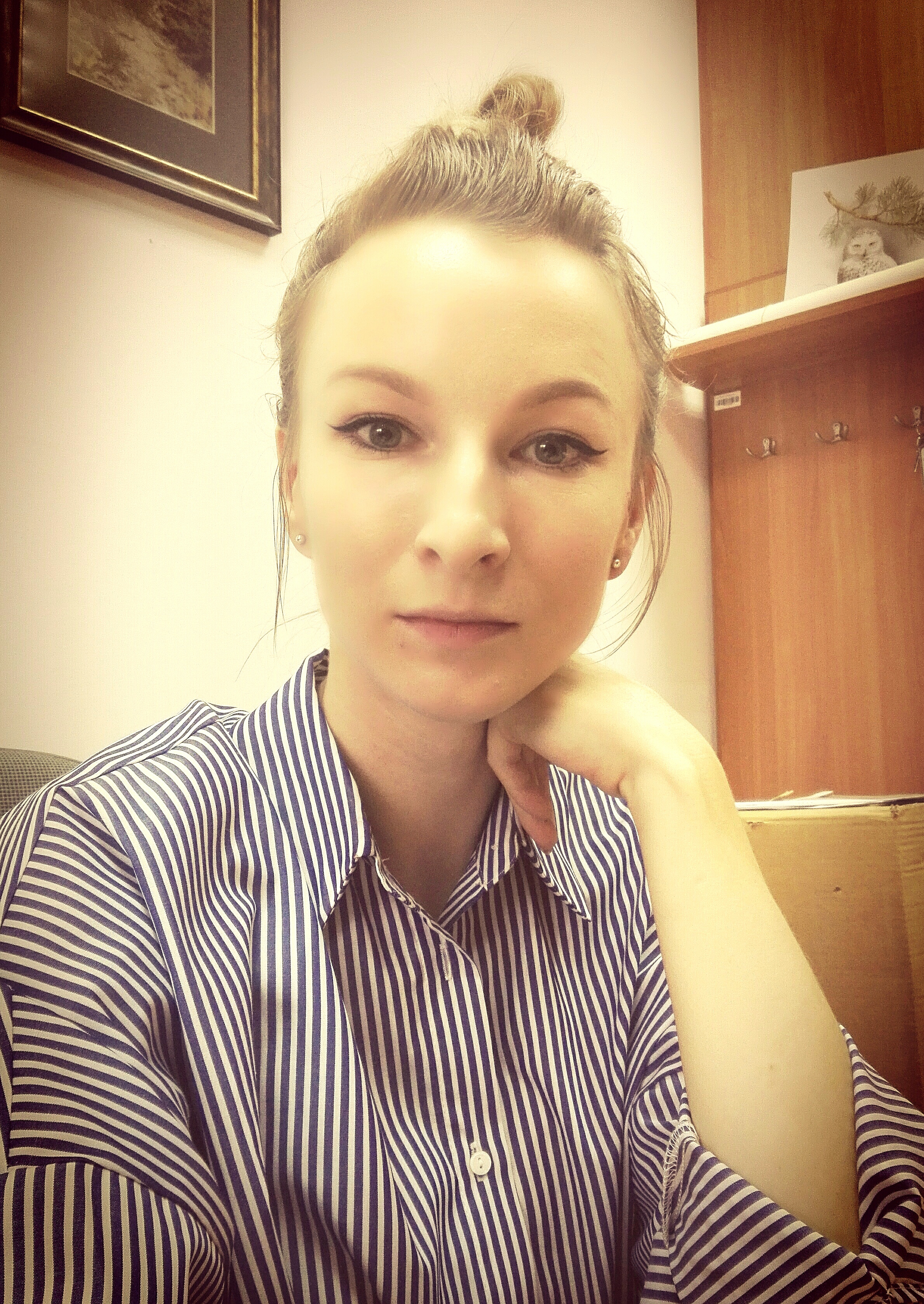
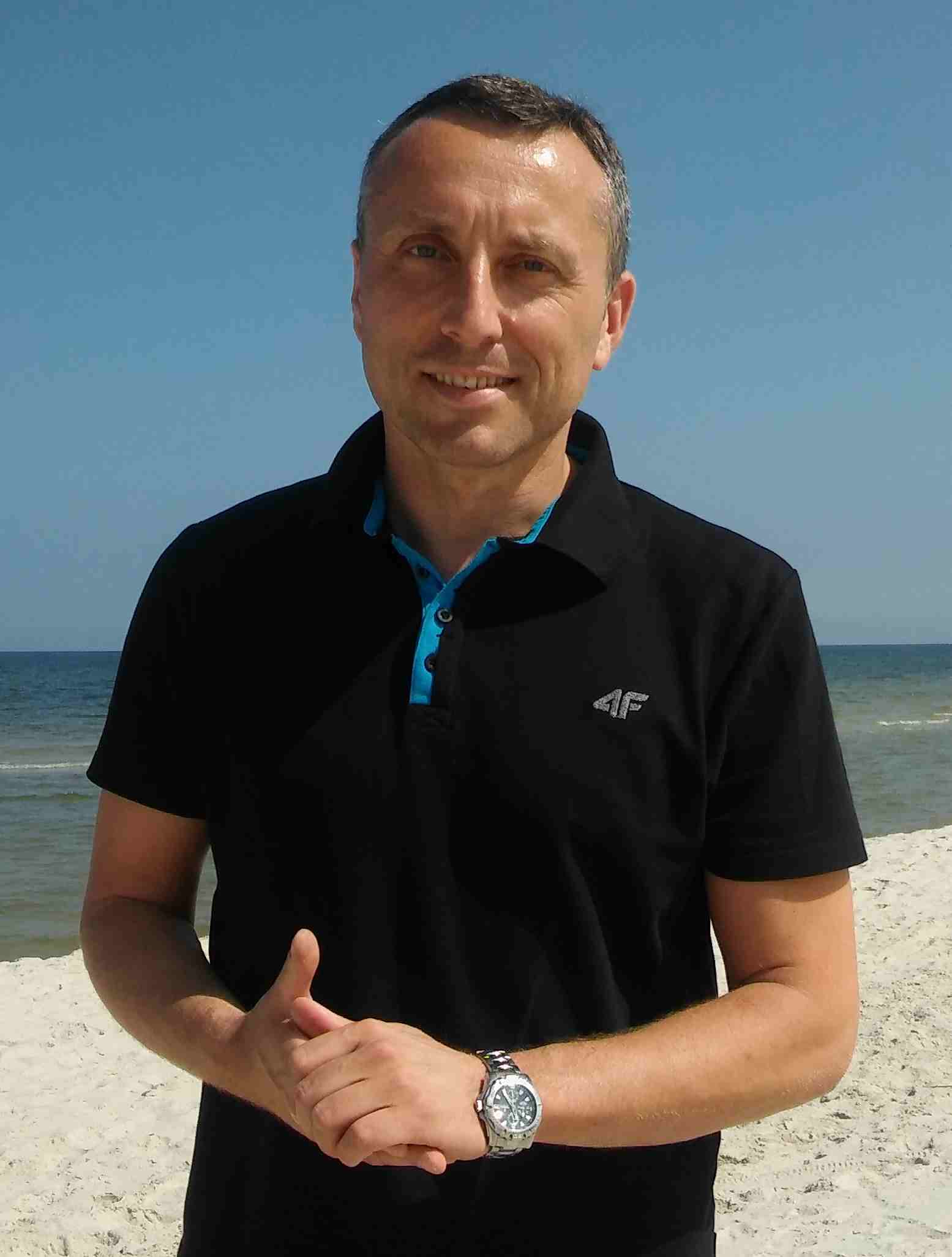 |
Professor Tomasz Mieczan Head of Department of Hydrobiology and Protection of Ecosystems professor of biological sciences in the discipline of biology, specialization: hydrobiology, microbiology, protistology, conservation, environmental protection. |
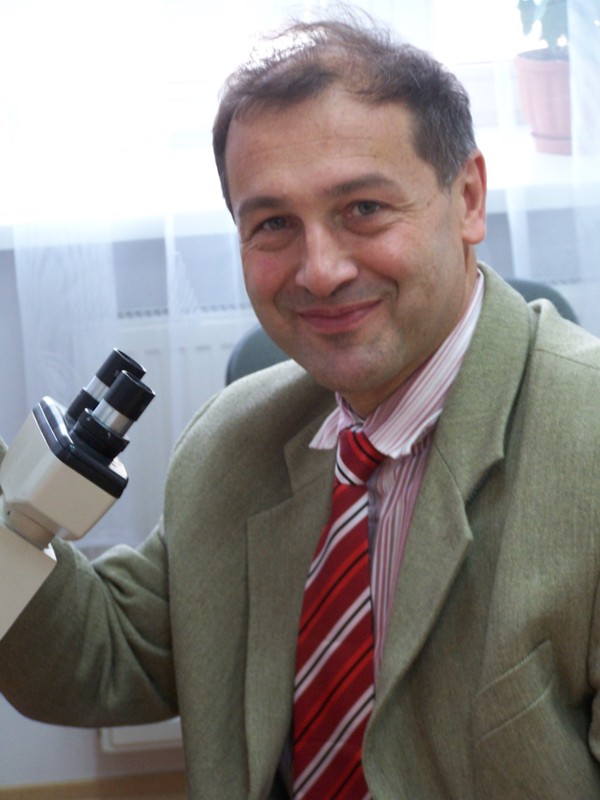 |
Professor Andrzej Demetraki-Paleolog Ph. D professor of biological sciences in the discipline of biology, specialization: hydrobiology. |
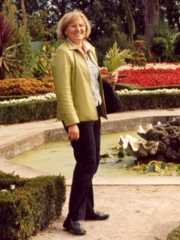 |
Professor Barbara Pawlik-Skowrońska Ph. D professor of natural sciences in the discipline of biology, specialty: ecophysiology, ecology, ecotoxicology, PHYCOLOGY, microbiology, environmental protection, hydrobiology. |
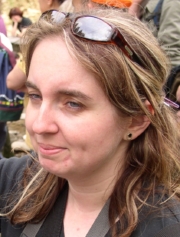 |
Dr hab. Monika Tarkowska-Kukuryk professor of biological sciences in the discipline of biology, specialization: hydrobiology, nature conservation, environmental protection. |
 |
Dr hab. Wojciech Pęczuła professor of biological sciences in the discipline of ecology, specialization: hydrology, environmental protection. |
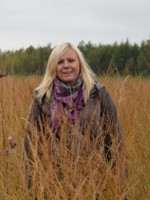 |
Dr hab. Magdalena Pogorzelec professor of biological sciences in the discipline of biology.
|
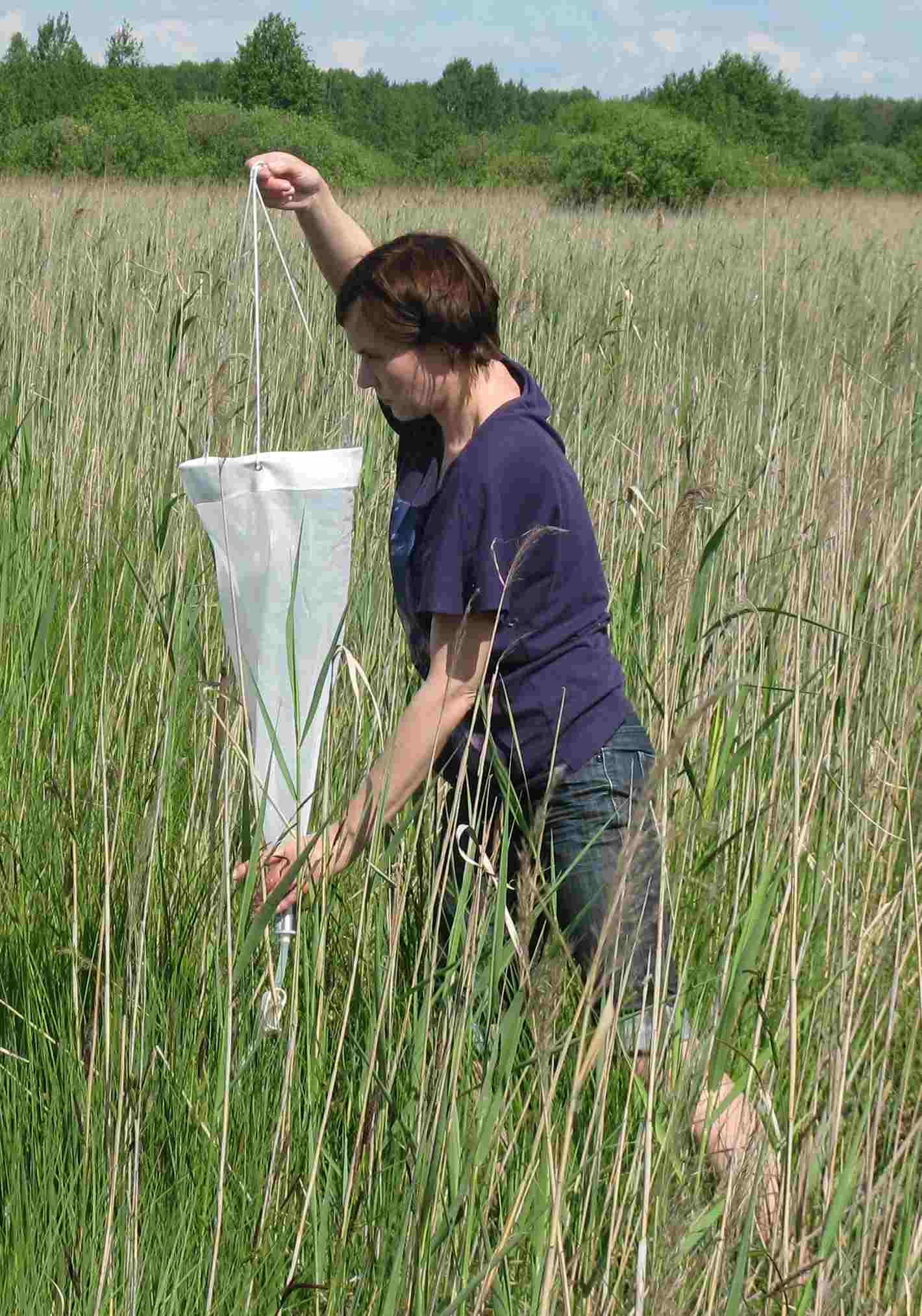 |
Dr hab. Małgorzata Adamczuk professor of biological sciences in the discipline of biology. |
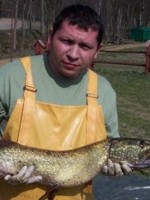 |
Dr hab. Jacek Rechulicz professor of biological sciences in the discipline of biology. |
 |
Dr hab. Adam Bownik professor of biological sciences in the discipline of biology. |
 |
Dr hab. Barbara Sowińska-Świerkosz, prof. uczelni professor of agricultural sciences in the discipline of environmental engineering.
|
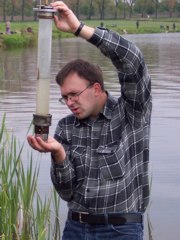 |
Dr Wojciech Płaska doctor of biological sciences in the discipline of biology, specialization: hydrobiology, zoology. |
 |
Dr Beata Ferencz doctor of Earth Sciences |
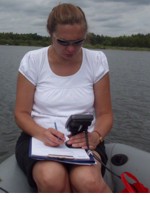 |
Dr Joanna Sender doctor of biological sciences. |
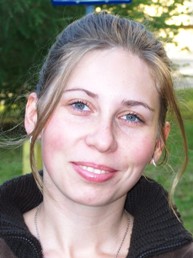 |
Dr inż Magdalena Toporowska doctor of biological sciences in the discipline of biology, specialization: hydrobiology. |
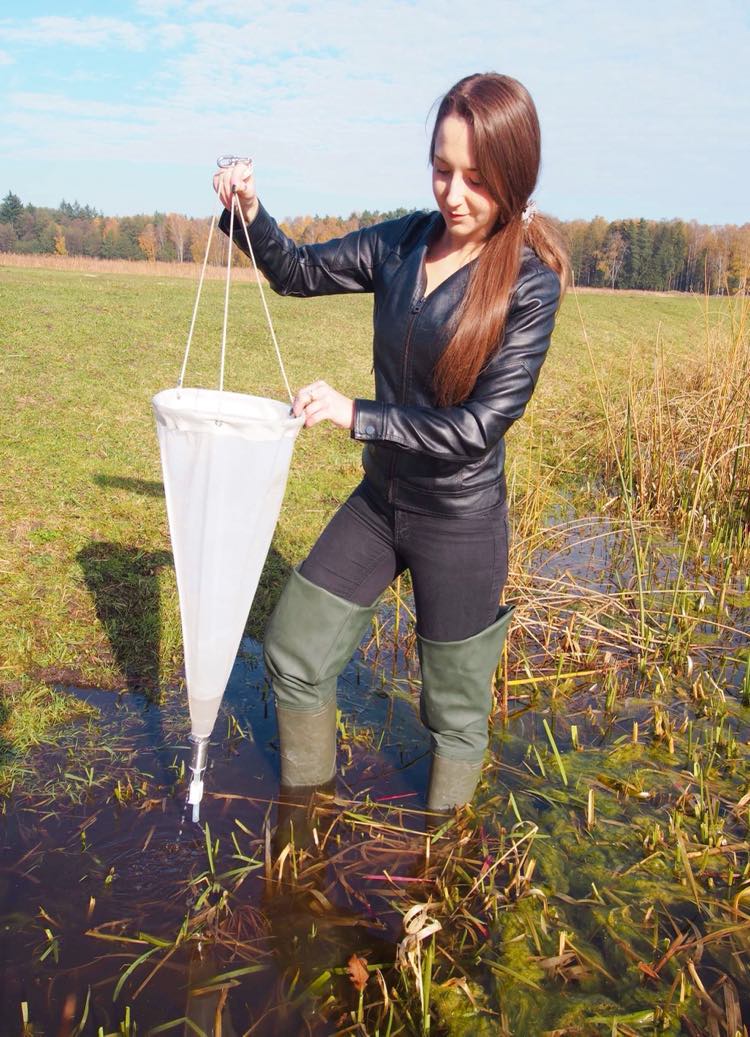 |
Mgr Aleksandra Bartkowska MSc in biology, specialization: analytical biology, forensic biology. Scientific interests: enviromental biology Contact: 0-81 461 00 61, wewn. 313, |
Technicians
PhD students
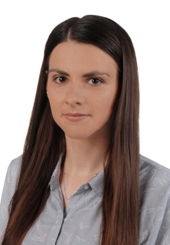 |
Scientific interests: nature-based solutions, spatial planning, revitalization, intelligent cities, geodesy, Spatial Information Systems (GIS). Contact: 0-81 461 00 61, wewn. 320 |
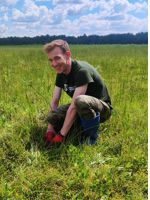 |
Mgr inż. Michał Arciszewski, Scientific interests: nature protection, functioning of wetland ecosystems, botany, protection of forest resources, ornithology. Contact: 0-81 461 00 61, wewn. 320
|
-
2024
2024
-
Bartkowska A., Mieczan T. 2024. Effect of Simulated Eutrophication of Peatlands on the Microbiome of Utricularia vulgaris L. Water, 16(7), 1046; https://doi.org/10.3390/w16071046
-
Bownik A., Pawlik-Skowrońska B., Wlodkowic D., Mieczan T. 2024. Interactive effects of cyanobacterial metabolites aeruginosin-98B, anabaenopeptin-B and cylindrospermopsin on physiological parameters and novel in vivo fluorescent indicators in Chironomus aprilinus larvae. Science of The Total Environment, 914. https://doi.org/10.1016/j.scitotenv.2023.169846
- Dawidek J., Ferencz B. 2024. Water Renewal Time in Lakes with Transformed Water Distribution in the Catchment Areas. Water, 16, 384. https://doi.org/10.3390/ w16030384
- Wilk-Woźniak E., Krztoń W., Budziak M.,…, Toporowska M.,…, Niedźwiecki M., Pawlik-Skowrońska B., …, Pęczuła W., …, Wasilewicz M., StevićF., Špoljarić Maronić D., Pfeiffer T.Ž. 2024 Harmful blooms across a longitudinal gradient in central Europe during heatwave: Cyanobacteria biomass, cyanotoxins, and nutrients. Ecological Indicators, 160. https://doi.org/10.1016/j.ecolind.2024.111929.
-
-
2023
2023
- Arciszewski M., Pogorzelec M., Bronowicka-Mielniczuk U., Niedźwiecki M., Parzymies M., Serafin A. 2023. The search for suitable habitats for endangered species at their historical sites—conditions for the success of Salix lapponum and Salix myrtilloides reintroduction. [Int. J. Environ. Res. Public Health, 20(2), 1133. DOI: 10.3390/ijerph20021133
- Bartkowska A., Mieczan T., Płaska W. 2023. Colonization of artificial substrates by invertebrate macrofauna in a river ecosystem—implications for forensic entomology. Int. J. Environ. Res. Public Health, 20(4), 2834. DOI: 10.3390/ijerph20042834
- Bownik A., Adamczuk M., Pawlik-Skowrońska B. 2023. Effects of cyanobacterial metabolites: Aeruginosin 98A, microginin-FR1, anabaenopeptin-A, cylindrospermopsin in binary and quadruple mixtures on the survival and oxidative stress biomarkers of Daphnia magna. Toxicon, 229, 107137. DOI: /10.1016/j.toxicon.2023.107137
- Bownik A., Adamczuk M., Pawlik-Skowrońska B., Mieczan T. 2023. Cyanobacterial metabolites: Aeruginosin 98A, microginin-FR1, anabaenopeptin-A, cylindrospermopsin and their mixtures affect behavioral and physiological responses of Daphnia magna. Environ. Toxicol. Pharmacol. 100, 104161. DOI: 10.1016/j.etap.2023.104161
- Ferencz B., Toporowska M., Dawidek J. 2023. Role of hydrology in cyanobacterial blooms in the floodplain lakes. Water, 15(8), 1547. DOI: 10.3390/w15081547
- García-Ayllón Veintimilla S., Lluís Miralles-Garcia L., Sowińska-Świerkosz B. 2023. Challenges in sustainable urban planning and territorial management for the XXI century. Front. environ. sci. 11, 1-2. DOI: 10.3389/fenvs.2023.1252835
- Kalinowska K., Ulikowski D., Traczuk P., Rechulicz J. 2023. Changes in native fish communities in response to the presence of alien brown bullhead (Ameiurus nebulosus) in four lakes (Poland). Biol. Invasions, 25, 2891–2900. DOI: 10.1007/s10530-023-03079-3
- Kamocki A., Kołos A., Pogorzelec M., Ożgo M. 2023. Microhabitat conditions and inter-species competition predict the successful restoration of declining relict species populations. Int. J. Environ. Res. Public Health, 20(1), 608. DOI: 10.3390/ijerph20010608
- Kulik M., Sender J., Bochniak A., Jaźwa M., Ciesielski D. 2023. The influence of mowing frequency on the growth and development of Phragmites australis. Journal for Nature Conservation, 76, 126492. DOI: 10.1016/j.jnc.2023.126492.
- Maślanko W., Sender J., Różańska-Boczula M. 2023. Rushes as a phytoindicator of a lake’s surrounding land use. Aquat. Ecol. (Print) 57(3), 633–652. DOI: 10.1007/s10452-023-10034-w
- Mieczan T., Bartkowska A., Bronowicka-Mielniczuk U., Rudyk-Leuska N. 2023. The Effect of Peatland Restoration on Ciliate Communities: Long-Term Analyses. Water. 15(21):3793. https://doi.org/10.3390/w15213793
- Nieoczym M., Stryjecki R., Buczyński P., Płaska W., Kloskowski J. 2023. Differential abundance, composition and mesohabitat use by aquatic macroinvertebrate taxa in ponds with and without fish. Aquat. Sci, 85, 25. DOI: 10.1007/s00027-022-00922-y
- Parzymies M., Pogorzelec M., Głębocka K., Śliwińska E. 2023. Micropropagation protocol and genetic stability of the Salix myrtilloides plants cultivated in vitro. Biology, 12(2), 168. DOI: 10.3390/biology12020168
- Pawlik-Skowrońska B., Bownik A., Pogorzelec M., Kulczycka J., Sumińska A. 2023. First report on adverse effects of cyanobacterial anabaenopeptins, aeruginosins, microginin and their mixtures with microcystin and cylindrospermopsin on aquatic plant physiology: An experimental approach, Toxicon, 236. 107333. https://doi.org/10.1016/j.toxicon.2023.107333
- Serafin A., Pogorzelec M., Bronowicka-Mielniczuk U. 2023. The influence of shallow peatland water quality on characteristics of the occurrence of selected herb species in the peatlands of eastern Poland. Int. J. Environ. Res. Public Health, 20(4) 2788. DOI: 10.3390/ijerph20042788.
- Sowińska-Świerkosz B., García J., Wendling L. 2023. Linkages between the concept of nature-based solutions and the notion of landscape. Ambio. DOI: 10.1007/s13280-023-01935-z.
-
2023
2023
- Arciszewski M., Pogorzelec M., Bronowicka-Mielniczuk U., Niedźwiecki M., Parzymies M., Serafin A. 2023. The search for suitable habitats for endangered species at their historical sites—conditions for the success of Salix lapponum and Salix myrtilloides reintroduction. [Int. J. Environ. Res. Public Health, 20(2), 1133. DOI: 10.3390/ijerph20021133
- Bartkowska A., Mieczan T., Płaska W. 2023. Colonization of artificial substrates by invertebrate macrofauna in a river ecosystem—implications for forensic entomology. Int. J. Environ. Res. Public Health, 20(4), 2834. DOI: 10.3390/ijerph20042834
- Bownik A., Adamczuk M., Pawlik-Skowrońska B. 2023. Effects of cyanobacterial metabolites: Aeruginosin 98A, microginin-FR1, anabaenopeptin-A, cylindrospermopsin in binary and quadruple mixtures on the survival and oxidative stress biomarkers of Daphnia magna. Toxicon, 229, 107137. DOI: /10.1016/j.toxicon.2023.107137
- Bownik A., Adamczuk M., Pawlik-Skowrońska B., Mieczan T. 2023. Cyanobacterial metabolites: Aeruginosin 98A, microginin-FR1, anabaenopeptin-A, cylindrospermopsin and their mixtures affect behavioral and physiological responses of Daphnia magna. Environ. Toxicol. Pharmacol. 100, 104161. DOI: 10.1016/j.etap.2023.104161
- Ferencz B., Toporowska M., Dawidek J. 2023. Role of hydrology in cyanobacterial blooms in the floodplain lakes. Water, 15(8), 1547. DOI: 10.3390/w15081547
- García-Ayllón Veintimilla S., Lluís Miralles-Garcia L., Sowińska-Świerkosz B. 2023. Challenges in sustainable urban planning and territorial management for the XXI century. Front. environ. sci. 11, 1-2. DOI: 10.3389/fenvs.2023.1252835
- Kalinowska K., Ulikowski D., Traczuk P., Rechulicz J. 2023. Changes in native fish communities in response to the presence of alien brown bullhead (Ameiurus nebulosus) in four lakes (Poland). Biol. Invasions, 25, 2891–2900. DOI: 10.1007/s10530-023-03079-3
- Kamocki A., Kołos A., Pogorzelec M., Ożgo M. 2023. Microhabitat conditions and inter-species competition predict the successful restoration of declining relict species populations. Int. J. Environ. Res. Public Health, 20(1), 608. DOI: 10.3390/ijerph20010608
- Kulik M., Sender J., Bochniak A., Jaźwa M., Ciesielski D. 2023. The influence of mowing frequency on the growth and development of Phragmites australis. Journal for Nature Conservation, 76, 126492. DOI: 10.1016/j.jnc.2023.126492.
- Maślanko W., Sender J., Różańska-Boczula M. 2023. Rushes as a phytoindicator of a lake’s surrounding land use. Aquat. Ecol. (Print) 57(3), 633–652. DOI: 10.1007/s10452-023-10034-w
- Mieczan T., Bartkowska A., Bronowicka-Mielniczuk U., Rudyk-Leuska N. 2023. The Effect of Peatland Restoration on Ciliate Communities: Long-Term Analyses. Water. 15(21):3793. https://doi.org/10.3390/w15213793
- Nieoczym M., Stryjecki R., Buczyński P., Płaska W., Kloskowski J. 2023. Differential abundance, composition and mesohabitat use by aquatic macroinvertebrate taxa in ponds with and without fish. Aquat. Sci, 85, 25. DOI: 10.1007/s00027-022-00922-y
- Parzymies M., Pogorzelec M., Głębocka K., Śliwińska E. 2023. Micropropagation protocol and genetic stability of the Salix myrtilloides plants cultivated in vitro. Biology, 12(2), 168. DOI: 10.3390/biology12020168
- Pawlik-Skowrońska B., Bownik A., Pogorzelec M., Kulczycka J., Sumińska A. 2023. First report on adverse effects of cyanobacterial anabaenopeptins, aeruginosins, microginin and their mixtures with microcystin and cylindrospermopsin on aquatic plant physiology: An experimental approach, Toxicon, 236. 107333. https://doi.org/10.1016/j.toxicon.2023.107333
- Serafin A., Pogorzelec M., Bronowicka-Mielniczuk U. 2023. The influence of shallow peatland water quality on characteristics of the occurrence of selected herb species in the peatlands of eastern Poland. Int. J. Environ. Res. Public Health, 20(4) 2788. DOI: 10.3390/ijerph20042788.
- Sowińska-Świerkosz B., García J., Wendling L. 2023. Linkages between the concept of nature-based solutions and the notion of landscape. Ambio. DOI: 10.1007/s13280-023-01935-z.
-
2023
2023
- Arciszewski M., Pogorzelec M., Bronowicka-Mielniczuk U., Niedźwiecki M., Parzymies M., Serafin A. 2023. The search for suitable habitats for endangered species at their historical sites—conditions for the success of Salix lapponum and Salix myrtilloides reintroduction. [Int. J. Environ. Res. Public Health, 20(2), 1133. DOI: 10.3390/ijerph20021133
- Bartkowska A., Mieczan T., Płaska W. 2023. Colonization of artificial substrates by invertebrate macrofauna in a river ecosystem—implications for forensic entomology. Int. J. Environ. Res. Public Health, 20(4), 2834. DOI: 10.3390/ijerph20042834
- Bownik A., Adamczuk M., Pawlik-Skowrońska B. 2023. Effects of cyanobacterial metabolites: Aeruginosin 98A, microginin-FR1, anabaenopeptin-A, cylindrospermopsin in binary and quadruple mixtures on the survival and oxidative stress biomarkers of Daphnia magna. Toxicon, 229, 107137. DOI: /10.1016/j.toxicon.2023.107137
- Bownik A., Adamczuk M., Pawlik-Skowrońska B., Mieczan T. 2023. Cyanobacterial metabolites: Aeruginosin 98A, microginin-FR1, anabaenopeptin-A, cylindrospermopsin and their mixtures affect behavioral and physiological responses of Daphnia magna. Environ. Toxicol. Pharmacol. 100, 104161. DOI: 10.1016/j.etap.2023.104161
- Ferencz B., Toporowska M., Dawidek J. 2023. Role of hydrology in cyanobacterial blooms in the floodplain lakes. Water, 15(8), 1547. DOI: 10.3390/w15081547
- García-Ayllón Veintimilla S., Lluís Miralles-Garcia L., Sowińska-Świerkosz B. 2023. Challenges in sustainable urban planning and territorial management for the XXI century. Front. environ. sci. 11, 1-2. DOI: 10.3389/fenvs.2023.1252835
- Kalinowska K., Ulikowski D., Traczuk P., Rechulicz J. 2023. Changes in native fish communities in response to the presence of alien brown bullhead (Ameiurus nebulosus) in four lakes (Poland). Biol. Invasions, 25, 2891–2900. DOI: 10.1007/s10530-023-03079-3
- Kamocki A., Kołos A., Pogorzelec M., Ożgo M. 2023. Microhabitat conditions and inter-species competition predict the successful restoration of declining relict species populations. Int. J. Environ. Res. Public Health, 20(1), 608. DOI: 10.3390/ijerph20010608
- Kulik M., Sender J., Bochniak A., Jaźwa M., Ciesielski D. 2023. The influence of mowing frequency on the growth and development of Phragmites australis. Journal for Nature Conservation, 76, 126492. DOI: 10.1016/j.jnc.2023.126492.
- Maślanko W., Sender J., Różańska-Boczula M. 2023. Rushes as a phytoindicator of a lake’s surrounding land use. Aquat. Ecol. (Print) 57(3), 633–652. DOI: 10.1007/s10452-023-10034-w
- Mieczan T., Bartkowska A., Bronowicka-Mielniczuk U., Rudyk-Leuska N. 2023. The Effect of Peatland Restoration on Ciliate Communities: Long-Term Analyses. Water. 15(21):3793. https://doi.org/10.3390/w15213793
- Nieoczym M., Stryjecki R., Buczyński P., Płaska W., Kloskowski J. 2023. Differential abundance, composition and mesohabitat use by aquatic macroinvertebrate taxa in ponds with and without fish. Aquat. Sci, 85, 25. DOI: 10.1007/s00027-022-00922-y
- Parzymies M., Pogorzelec M., Głębocka K., Śliwińska E. 2023. Micropropagation protocol and genetic stability of the Salix myrtilloides plants cultivated in vitro. Biology, 12(2), 168. DOI: 10.3390/biology12020168
- Pawlik-Skowrońska B., Bownik A., Pogorzelec M., Kulczycka J., Sumińska A. 2023. First report on adverse effects of cyanobacterial anabaenopeptins, aeruginosins, microginin and their mixtures with microcystin and cylindrospermopsin on aquatic plant physiology: An experimental approach, Toxicon, 236. 107333. https://doi.org/10.1016/j.toxicon.2023.107333
- Serafin A., Pogorzelec M., Bronowicka-Mielniczuk U. 2023. The influence of shallow peatland water quality on characteristics of the occurrence of selected herb species in the peatlands of eastern Poland. Int. J. Environ. Res. Public Health, 20(4) 2788. DOI: 10.3390/ijerph20042788.
- Sowińska-Świerkosz B., García J., Wendling L. 2023. Linkages between the concept of nature-based solutions and the notion of landscape. Ambio. DOI: 10.1007/s13280-023-01935-z.
-
2022
2022
- Adamczuk M. 2022. Environmentally realistic concentrations of ibuprofen influence life histories but not population dynamics of Daphnia magna. Sci. Total Environ. Vol. 848 Article number 157783.
- Adamczuk M. 2022. Spatial distribution of cladocera in a stratified palaearctic lake. Water. Vol. 14 Issue 17 Article number 2667. il., bibliogr., sum. DOI: 10.3390/w14172667
- Adamczuk M. 2022. The monitoring of diet and habitat preferences indicates competitive effect of exotic Ictalurus nebulosus on native fish under food-limited conditions. Glob. Ecol. Conserv. 2022 Vol.34 Article number e02060, il., bibliogr., sum. DOI: 10.1016/j.gecco.2022.e02060
- Bownik. A., Adamczuk M., Pawlik-Skowrońska B. 2022. Behavioral disturbances induced by cyanobacterial oligopeptides microginin-FR1, anabaenopeptin-A and microcystin-LR are associated with neuromotoric and cytotoxic changes in Brachionus calyciflorus. Journal of Hazardous Materials, Vol 438: 129472, https://doi.org/10.1016/j.jhazmat.2022.129472
- Ferencz B., Dawidek J., Bronowicka-Mielniczuk U. 2022. Alteration of yield and springs number as an indicator of climate changes. Case study of Eastern Poland, Ecological Indicators, 138, 108798, https://doi.org/10.1016/j.ecolind.2022.108798.
- Mieczan T., Bartkowska A. 2022. The effect of experimentally simulated climate warming on the microbiome of carnivorous plants – A microcosm experiment. Global Ecology and Conservation, 34 (2022) e02040, doi.org/10.1016/j.gecco.2022.e02040.
- Mieczan T., Bronowicka-Mielniczuk U. 2022. Ciliates in different types of pools in temperate, tropical, and polar climate zones – implications for climate change. Journal of Limnology, 81:1997, doi: 10.4081/jlimnol.2021.1997.
- Mieczan T., Płaska W., Adamczuk M., Toporowska M., Bartkowska A. 2022. Effects of the Invasive Fish Species Ameiurus nebulosus on Microbial Communities in Peat Pools. Water 14, 815, doi.org/10.3390/w14050815.
- Parzymies M., Pogorzelec M., Świstowska A. 2022. The optimization of the propagation of Aldrovanda vesiculosa Polish strain in tissue culture. Biology, 11, 1389. https://doi.org/10.3390/biology11101389.
- Pawlik- Skowrońska B., Bownik A. 2022. Synergistic toxicity of some cyanobacterial oligopeptides to physiological activities of Daphnia magna(Crustacea).Toxicon,Vol 206,30, pp. 74-84.
- Pęczuła W., Tarkowska-Kukuryk M., Niedźwiecki M. 2022. Does water brownification affect duckweeds in freshwaters? Results from a laboratory experiment. Water 14 (23):3826. https://doi.org/10.3390/w14233826.
- Połeć K., Grzywna A., Tarkowska-Kukuryk M., Bronowicka-Mielniczuk U. 2022. Changes in the Ecological Status of Rivers Caused by the Functioning of Natural Barriers. Water 14(9): 1522. https://doi.org/10.3390/w14091522.
- Pogorzelec M., Hawrylak-Nowak B., Banach-Albińska B., Szczurowska A., Parzymies M., Spólna K. 2022. From ex situ cultivation to stands in natural habitats: critical periods for plants during the reintroduction of Salix lapponum L. in Eastern Poland. Journal for Nature Conservation 67: 126172. https://doi.org/10.1016/j.jnc.2022.126172.
- Pogorzelec M., Parzymies M., Pawlik-Skowrońska B., Arciszewski M., Mielniczuk J. 2022. Searching for optimal substitute habitats for plants by biological experiments – a case study of the endangered species Aldrovanda vesiculosa L. (Droseraceae). Int. J. Environ. Res. Public Health 19,10743 https://doi.org/10.3390/ijerph191710743
- Rusinek-Prystupa E., Rechulicz J., Ognik K. 2022. The Level of Indicators of Redox Status in Muscles of Fish from Lakes with Different Trophy. Pol. J. Environ. Stud. Vol. 31, No. 2 (2022), 1-10. DOI: 10.15244/pjoes/142149.
- Sender J., Różańska-Boczula M., Urban D. 2022. Active protection of endangered species of peat bog flora (Drosera intermedia, D. anglica) in the Łęczna-Włodawa lake district. Water. 14(18)2775. DOI: 10.3390/w14182775
- Serafin A., Pogorzelec M., Banach-Albińska B., Zalewska E., Bronowicka-Mielniczuk U., Arciszewski M. 2022. The Importance of Groundwater Quality and Other Habitat Parameters for Effective Active Protection of an Endangered Plant Species in Eastern Poland. Water. 14(8):1270. https://doi.org/10.3390/w14081270.
- Serafin A., Pogorzelec M., Bronowicka-Mielniczuk U., Spólna K. 2022. Habitat preferences of Comarum palustre L. in the peatlands of eastern Poland. Mires and Peat, 28(19): 16 pp.
- Soszyński D., Sowińska – Świerkosz B., Kamiński J., Trzaskowska E., Gawryluk A., 2022. Rural public places: specificity and importance for the local community (case study of four villages). Eur. Plan. Stud. 30(2), 311-335. DOI: 10.1080/09654313.2021.1948974.
- Sowińska – Świerkosz B., Garcia J. 2022. What are nature-based solutions (NBS)? Setting core ideas for concept clarification. Nature-Based Solutions, 2, 100009. DOI: 10.1016/j.nbsj.2022.100009
- Sowińska – Świerkosz B., Soszyński D. 2022. Spatial indicators as a tool to support the decision-making process in relation to different goals of rural planning. Land Use Policy, 119, 106180. DOI: 10.1016/j.landusepol.2022.106180
- Ścibior R., Stryjecki R., Różańska-Boczula M., Demetraki-Paleolog A., Kowalczyk-Pecka D., Strachecka A. 2022. The factors that modify the rate of damage and decomposition of nuphar lutea leaves: an example from a shallow eutrophic lake. Pol. J. Natur. Sc., 37(4): 517-537. DOI: 10.31648/pjns.7489
- Tarkowska-Kukuryk M., Grzywna A. 2022. Macrophyte communities as indicators of the ecological status of drainage canals and regulated rivers (Eastern Poland). Environ Monit Assess194: 210; doi.org/10.1007/s10661-022-09777-0.
- Toporowska M. 2022. Degradation of Three Microcystin Variants in the Presence of the Macrophyte Spirodela polyrhiza and the Associated Microbial Communities. Int. J. Environ. Res. Public Health 19, 6086. https:// doi.org/10.3390/ijerph19106086.
- Widelska E., Sowińska – Świrkosz B., Walczak W. 2022. Natural water reservoirs as an example of effective nature-based solutions (NBS). In: Limnology, Red: Massarelli C. and Campanale C. IntechOpen, 978-1-80356-537-8.
- Wlodkowic D., Bownik A., Leitner C., Stengel D., Braunbeck T. 2022. Beyond the behavioural phenotype: Uncovering mechanistic foundations in aquatic eco-neurotoxicology. Sci. Total Environ. 2022 Vol. 829 Aricle number 154584, il., bibliogr., sum. DOI: 10.1016/j.scitotenv.2022.154584
- Wójcik-Madej J., Sowińska-Świerkosz B. 2022. Pre-Existing Interventions as NBS Candidates to Address. Sustainability. Vol 14 (15), 9609, https://doi.org/10.3390/su14159609.
-
2021
2021
- Adamczuk M. 2021. Demographic consequwnces of mitigating strategies in planktonic invertebrates fasing global browning of freshwater ecosystem. Aquatic Sciences, 83, 31.
- Bownik A., Szabelak A. 2021. Short-term effects of pesticide fipronil on behavioral and physiological endpoints of Daphnia magna. Environmental Science and Pollution Research. DOI: 10.1007/s11356-021-13091-6.
- Bownik A., Wlodkowic D. 2021. Advances in real-time monitoring of water quality using automated analysis of animal behaviour. Science of the Total Environment. DOI: https://doi.org/10.1016/j.scitotenv.2021.147796 In press 147796
- Bownik A., Wlodkowic D. 2021. Applications of advanced neuro-behavioral analysis strategies in aquatic ecotoxicology. Science of the Total Environment. 772: 145577. DOI: 10.1016/j.scitotenv.2021.145577.
- Chałabis-Mazurek A., Rechulicz J., Pyz-Łukasik R. 2021. A Food-Safety Risk Assessment of Mercury, Lead and Cadmium in Fish Recreationally Caught from Three Lakes in Poland. Animals. 11, 3507. https://doi.org/10.3390/ ani11123507
- Dawidek J., Ferencz B., Kubiak-Wójcicka K. 2021. Natural and Anthropogenic Lakes of River Valleys. In: Zelenakova M., Kubiak-Wójcicka K., Negm A.M. Management of Water Resources in Poland. Springer Water. Springer, https://doi.org/10.1007/978-3-030-61965-7_6.
- Donis D., Mantzouki E., McGinnis D. F., Vachon D., Gallego I., Grossart H. P., … Toporowska M., Pawlik-Skowrońska B., Niedźwiecki M., Pęczuła W., … & Rodriguez V. 2021. Stratification strength and light climate explain variation in chlorophyll a at the continental scale in a European multilake survey in a heatwave summer. Limnology and Oceanography, 9999, 1-20. doi: 10.1002/lno.11963
- Ferencz B., Dawidek J. 2021. Assessment of Spatial and Vertical Variability of Water Quality: Case Study of a Polymictic Polish Lake. Int. J. Environ. Res. Public Health. 18, 8620. https://doi.org/10.3390/ijerph18168620
- Mieczan T., Grześkiewicz M. 2021. The impact of climate warming on the diurnal dynamics of the microbial loop: Ice cover vs. lack of ice cover on dystrophic lakes. Saudi Journal of Biological Sciences, 9: 5175-5186, https://doi.org/10.1016/j.sjbs.2021.05.047
- Mieczan T., Tarkowska-Kukuryk M. 2021. The effect of climate warming on microbial loop function in peat pools and Sphagnum hollows: mesocosm experiments. Int. Rev. Hydrobiol., 106: 106-120.
- Pawlik- Skowrońska B., Bownik A. 2021. Cyanobacterial anabaenopeptin-B, microcystins and their mixture cause toxic effects on the behavior of the freshwater crustacean Daphnia magna (Cladocera). Toxicon. 198: 1-11.
- Rechulicz J., Płaska W. 2021. The diet of non-indigenous Ameiurus nebulosus of varying size and its potential impact on native fish in shallow lakes. Global Ecology and Conservation. Volume 31, November 2021, e01881.
- Soszyński D., Sowińska- Świerkosz B., Kamiński J., Trzaskowska E., Gawryluk A. 2021. Rural public places: specificity and importance for the local community (case study of four villages). European Planning Studies. DOI: 10.1080/09654313.2021.1948974
- Sowińska- Świerkosz B., Michalik-Śnieżek M., Bieske-Matejak A. 2021. Can Allotment Gardens (AGs) Be Considered an Example of Nature-Based Solutions (NBS) Based on the Use of Historical Green Infrastructure? Sustainability, 13, 835. https://doi.org/10.3390/
- Sowińska – Świerkosz B., Garcia J. 2021. A new evaluation framework for nature-based solutions (NBS) projects based on the application of performance questions and indicators approach. Sci. Total Environ. 787, 147615.
- Sowińska-Świerkosz B., Wójcik-Madej J., Michalik-Śnieżek M. 2021. An assessment of the ecological landscape quality (elq) of nature-based solutions (nbs) based on existing elements of green and blue infrastructure (gbi). Sustainability, 13(21), 11674. DOI: 10.3390/su132111674
- Sowińska-Świerkosz B., Wójcik J., Michalik-Śnieżek M. 2021. Identyfikacja i ocena elementów zielonej i niebieskiej infrastruktury miasta lublin związanych z konceptem rozwiązań opartych na naturze (nature-based solution nbs). W: VII Konferencja Naukowo-Techniczna, Nowe kierunki badań w inżynierii środowiska, energetyce, geodezji i leśnictwie. Streszczenia. Redakcja merytoryczna / Krzysztof Jóźwiakowski, Alina Kowalczyk-Juśko, Agata Basak, Barbara Kępowicz, Patrycja Pochwatka s. 48-49. Zwierzyniec 2021.
- Szabelak A., Bownik A., Knaga S., Kasperek K. 2021. Effects of L-proline on cellular responses of hen erythrocytes subjected to thermal stress. Journal of Thermal Biology. 96: nr art. 102855. . DOI: 10.1016/j.jtherbio.2021.102855.
- Tarkowska-Kukuryk M. 2021. Environmental drivers of macroinvertebrate assemblages within peat pool habitat – implication for bioassessment. Water 13, 2369. https://doi.org/10.3390/w13172369
- Tarkowska-Kukuryk M., Toporowska M. 2021. Long-term responses of epiphytic midges (Diptera, Chironomidae) to emergent macrophytes removal and P concentrations in a shallow hypertrophic lake ecosystem. Science of the Total Environment. https://doi.org/10.1016/j.scitotenv.2020.141508.
- Tkaczyk A., Bownik A., Dudka J., Kowal K., Ślaska B. 2021. Daphnia magna model in the toxicity assessment of pharmaceuticals: A review. Science of the Total Environment. 763: 143038. DOI: 10.1016/j.scitotenv.2020.143038.
- Wendling L., Garcia J., Descouteaux D., Sowińska-Świerkosz B., McPhearson T., Frantzeskaki N., La Rosa D., Yiwen Z., Lin T., Fidélis T., Dumitru A., Mitsch W. Jr., Lavrnić S., Maucieri C., Wang Y., Mccarton Y., O’hogain S., Schmidt S., Vidal G., Crespo C.H. 2021.Introduction to the Nature-Based Solutions journal. Nature-Based Solutions, 1, 100003. DOI: 10.1016/j.nbsj.2021.100003
-
2020
2020
- Adamczuk M. 2020. Population dynamics and life history traits of Daphnia magna across thermal regimes of environments. Science of the Total Environment, 723: a137963.
- Adamczuk M., Mieczan T., Ferencz B. 2020. Epibenthic Cyclopoida in eutrophic, temperate lakes-diversity, abundance and the influence of environmental variables. Limnetica, 39: 525-538.
- Adamczuk. M., Pawlik-Skowrońska B., Solis M. 2020. Do anthropogenic alterations in shallow lakes affect the dynamics of plankton? Ecological Indicators 114, 106312.
- Benelli G., Pavela R., Cianfaglione K., Sender J., Urban D., Maślanko W., Canale A, Barboni L., Petrelli R., Zeppa L., Aguzzi C., Maggi F. 2020. Ascaridole-rich essential oil from marsh rosemary (Ledum palustre) growing in Poland exerts insecticidal activity on mosquitoes, moths and flies without serious effects on non-target organisms and human cells. Food Chem. Toxicol. Vol. 138 Article no. 111184.
- Bownik A. 2020. Physiological endpoints in daphnid acute toxicity tests. Science of the Total Environment, 700: 134400.
- Bownik A., Jasieczek M., Kosztowny E. 2020. Ketoprofen affects swimming behavior and impairs physiological endpoints of Daphnia magna. Science of the Total Environment, 725: 1-7.
- Bownik A., Ślaska B., Dudka J. 2020. Cisplatin affects locomotor activity and physiological endpoints of Daphnia magna. Journal of Hazardous Materials, 384: 121259.
- Ferencz B., Dawidek J., Toporowska M., Raczyński K. 2020. Environmental implications of potamophases duration and concentration period in the floodplain lakes of the Bug River valley. Science of The Total Environment, 746, 141108.
- Halabowski D., Lewin I., Buczyński P., Krodkiewska M., Płaska W., Sowa A., Buczyńska E. 2020. Impact of the discharge of salinised coal mine waters on the structure of the macroinvertebrate communities in an urban river (Central Europe). Water, Air & Soil Pollution, 231 (1): 5.
- Kowal K., Bownik A., Tkaczyk A., Ślaska B. 2020. Analysis of differences in stability of proteins encoded in mitochondrial DNA of model organisms. Medycyna Weterynaryjna, 76: 93-97.
- Kowal K., Tkaczyk A., Pierzchała M., Bownik A., Ślaska B. 2020. Identification of Mitochondrial DNA (NUMTs) in the nuclear genome of Daphnia magna. Vol. 21 Issue 22. Article numer 8725.
- Krzemińska I., Nosalewicz A., Reszczyńska E., Pawlik-Skowrońska B. 2020. Enhanced Light-Induced Biosynthesis of Fatty Acids Suitable for Biodiesel Production by the Yellow-Green Alga Eustigmatos magnus. Energies. Vol 13 Iss. 22 Articule number 6098.
- Mieczan T. 2020. Microcosm on a bottle: experimental tests on the colonization of plastic and glass substrates in a retention reservoir. Journal of Limnology, 3: 199-209.
- Mieczan T., Tarkowska-Kukuryk M. 2020. The effect of climate warming on microbial loop function in peat pools and Sphagnum hollows: mesocosm experiments. International Review of Hydrobiology. DOI: 10.1002/iroh.202002044.
- Parzymies M., Pogorzelec M. Głębocka K., Śliwińska E. 2020. Genetic Stability of the Endangered Species Salix lapponum L. Regenerated In Vitro during the Reintroduction Process. Biology 9(11), 378.
- Pawlik-Skowrońska B., Toporowska M., Mazur-Marzec H. 2020. Effects of secondary metabolites produced by different cyanobacterial populations on the freshwater zooplankters Brachionus calyciflorus and Daphnia pulex. Environmental Science and Pollution Research, 26(12): 11793-11804.
- Pogorzelec M., Bronowicka-Mielniczuk U., Serafin A., Parzymies M. 2020. The importance of habitat selection for the reintroduction of the endangered Salix lapponum L. in eastern Poland. Journal for Nature Conservation, 54: 125785 online https://doi.org/10.1016/j.jnc.2020.125785.
- Pogorzelec M., Parzymies M., Banach-Albińska B, Serafin A., Szczurowska A. 2020. The experimental reintroduction of the boreal species Salix lapponum L. to refuges at the southern limit of its range – short-term results. Boreal Environment Research 25:161-169.
- Sahu Y.K., Deb M.K., Patel K.S., Martin-Ramos P, Towett E.K., Tarkowska-Kukuryk M. 2020. Bioaccumulation of nutrients and toxic elements with macrophytes. Journal of Toxic, Hazardous and Radio Active Waste, 24: 1, DOI: 10.1061/(ASCE)HZ.2153-5515.0000481.
- Sahu Y.K., Patel K.S., Martin-Ramos P., Rudzińska M., Górnaś P., Towett E.K., Martin-Gil J., Tarkowska-Kukuryk M. 2020. Algal characterization and bioaccumulation of trace elements from polluted water. Environ Monit Assess, 192: 38, https://doi.org/10.1007/s10661-019-8001-3.
- Sender J., Różańska-Boczula M., Grzywna A. 2020. Share of rushes in water uptake in shallow lakesin eastern Poland. Ann. Limnol. Vol. 56(5): 1-8.
- Sender J., Urban D., Różańska – Boczula M., Grabowski M. 2020. Factors influencing helophyte distribution in lakes (Eastern Poland). Water Resour. Vol. 47 Issue 2 s. 315-324.
- Sender J., Urban D., Różańska – Boczula M. 2020. Phenomenon of Macrophyte Differentiation in a Small Lake (Fenomenon Pembezaan Makrofit di Suatu Tasik Kecil). Sains Malays. Vol. 49 Issue 6 s. 1209-1222.
- Serafin A., Pogorzelec M. , Bronowicka-Mielniczuk U. 2020. Effect of the quality of shallow groundwaters on the occurrence of selected relic plant species of peatlands in the Łęczna-Włodawa Lakeland. Journal of Water and Land Development 45 (IV-VI): 133-142.
- Sowińska-Świerkosz B. 2020. Critical review of landscape-based surrogate measures of plant diversity. Landscape Research. Vol. 45(7): 819-840.
- Sowińska-Świerkosz B. , Michalik-Śnieżek M. 2020. The Methodology of Landscape Quality (LQ) Indicators Analysis Based on Remote Sensing Data: Polish National Parks Case Study. Sustainability. Vol. 12(7), 2810.
- Sowińska-Świerkosz B. , Michalik-Śnieżek M., Soszyński D., Kułak A. 2020. In the Search of an Assessment Method for Urban Landscape Objects (ULOs): Tangible and Intangible Values, Public Participation Geographic Information Systems (PPGIS), and Ranking Approach. Land. Vol. 9 Issue 12 Article no. 502, DOI: 10.3390/land9120502.
- Szabelak A. , Bownik A. 2020. Behavioral and physiological responses of Daphnia magna to salicylic acid. Chemosphere, In press.
- Szabelak A. , Bownik A. , Knaga S., Kasperek K. 2020. Early morphological and apoptotic responses of bird erythrocytes to thermal stress. Biotechnic & Histochemistry, DOI: 10.1080/10520295.2020.1776897.
- Ślaska B., Śmiech A., Bownik A. , Kowal K., A Tkaczyk, Pierzchała M. 2020. Defects In mitochondrial NADH-dehydrogenase genes in canine mast tumours. Annals of Animal Sciences, 20: 919-937.
- Tarkowska-Kukuryk M., Pęczuła W., Mieczan T. 2020. Grazing affects periphytic algal biomass in the periphyton-macrophyte relationship independently of the substrate type and nutrient status. J. Limnol. 2: 124-137.
- Tkaczyk A., Bownik A., Dudka J., Kowal K., Ślaska B. 2020. Daphnia magna model in the toxicity assessment of pharmaceuticals: A review. Science of the Total Environment, In press.
- Toporowska M., Mazur-Marzec H., Pawlik-Skowrońska B. 2020. The effects of cyanobacterial bloom extracts on the biomass, chl-a, MC and other oligopeptides contents in a natural Planktothrix agardhii population. Int. J. Environ. Res. Public Health, 17(8), 2881.
- Urban D., Sender J., Tokarz E., Różycki A. 2020. Characteristics of Liparis loeselii (L.) Rich. populations in selected Natura 2000 areas in eastern Poland. Folia Geobot. Vol. 55 Issue 3 s. 151-162, DOI: 10.1007/s12224-020-09371-7.
- Winiarska-Mieczan A., Mieczan T., Wójcik G. 2020. Importance of redox equilibrium in the pathogenesis of psoriasis-impact of antioxidant-rich diet. Nutrients, 12(6):1841. doi: 10.3390/nu12061841.
-
2019
2019
- Adamczuk M., Mieczan T. 2019. Within-species phenotypic diversity enhances resistanceto stress – A case study using the polymorphic species Bosmina longirostris. International Review of Hydrobiology 104: 137-146.
- Adamczuk M., Ferencz B., Mieczan T., Dawidek J. 2019. Allochthonous subsidies as driving forces for development of plankton in an autotrophic, temperate, and small lake. Hydrobiologia, 846, 59-74.
- Bownik A. 2019. Physiological endpoints in daphnid acute toxicity tests. Science of The Total Environment. 134400, In press. DOI: 10.1016/j.scitotenv.2019.134400.
- Bownik A., Pawlik-Skowrońska B. 2019. Early indicators of behavioral and physiological disturbances in Daphnia magna (Cladocera) induced by cyanobacterial neurotoxin anatoxin-a. Science of The Total Environment 695, 133913. DOI: 10.1016/j.scitotenv.2019.
- Bownik A., Szabelak A., Kulińska M., Wałęka M. 2019. Effects of L-proline on swimming parameters of Daphnia magna subjected to heat stress. Journal of Thermal Biology 84, 154-163.
- Budzyńska A., Rosińska J., Pełechata A., Toporowska M., Napiórkowska-Krzebietke A., Kozak A., Messyasz B., Pęczuła W., Kokociński M., Szeląg-Wasielewska E., Grabowska M., Mądrecka B., Niedźwiecki M., Alcaraz Parraga P., Pełechaty M., Karpowicz M., Pawlik-Skowrońska B. 2019. Environmental factors driving the occurence of the invasive cyanobacterium Sphaerospermopsis aphanizomenoides (Nostocales) in temperate lakes. Science of the Total Environment, 650 (1): 1338-1347.
- Gryzińska M., Rechulicz J., Batkowska J., Jeżewska-Witkowska G., Strachecka A. 2019. Comparison of programs to design primers for Methylation-Specific PCR. Romanian Biotechnological Letters. DOI: 10.26327/RBL2018.251
- Ferencz B., Toporowska M., Dawidek J. 2019. Temporal and Vertical Relations between Various Environmental Factors in the Largest Lake of Łęczna-Włodawa Lake District (Eastern Poland). Water, 11, 1263. doi:10.3390/w11061263
- Mieczan T., Adamczuk M., Świątecki A., Rudyk-Leuska N. 2019. Relationship between ciliates and environmental parameters in a restored carbonate fen. J. Limnol. 1: 107-120.
- Mieczan T., Rudyk-Leuska N. 2019. Seasonal dynamics of the epibiont food web on Unio tumidus (Philipsson, 1788) in eutrophic reservoir. European Journal of Protistology, 69: 138-150.
- Rechulicz J. 2019. Changes in a Fish Community in a Small River Related to the Appearance of the Invasive Topmouth Gudgeon Pseudorasbora parva (Temminck & Schlegel, 1846). Water, 11(9), 1857.
- Rechulicz J., Chałabis-Mazurek A., Valverde Piedra J.L., Mieczan T. 2019. Hg Concentrations in Muscles and Gills of Fish from Shallow Lakes of Different Trophic Status (Eastern Poland). Polish Journal of Environmental Studies, 28: 1. doi: 10.15244/pjoes/84773.
- Rechulicz J., Płaska W. 2019. Inter-population variability of diet of the alien species brown bullhead (Ameiurus nebulosus) from lakes with different trophic status. Turkish Journal of Fisheries and Aquatic Sciences, 19(1): 59-69. doi: 10.4194/1303-2712-v19_01_07.
- Sender J., Garbowski M. 2019. Stability and Diversity in Lake Ecosystem Two Decades after Restoration.Russian Journal of Ecology 50(3): 268-279.
- Serafin A., Pogorzelec M., Bronowicka-Mielniczuk U. 2019. Hierarchization of abiotic environmental properties – methodical study for research on the ecology of plants in peat bog habitats. Applied Ecology and Environmental Research, 17 (2): 4081-4096.
- Serafin A., Sender J., Bronowicka-Mielniczuk U. 2019. Potential of shrubs, shore vegetation and macrophytes of a lake to function as a phytogeochemical barrier against biogenic substances of various origin. Water, 11 (2): 290.
- Sowińska-Świerkosz B., Kolejko M. 2019. Extinction risk to lake minnow (Eupallasella percnurus) due to habitat loss: Eastern Poland case study. Environmental Monitoring and Assessment, 191: 571. https://doi.org/10.1007/s10661-019-7731-6
- Sowińska-Świerkosz B., Soszyński D. 2019. The index of the Prognosis Rural Landscape Preferences (IPRLP) as a tool of generalizing peoples’ preferences on rural landscape. Journal of Environmental Management, 248, 109272
- Urban D., Tokarz E., Sender J., Smal H. 2019. Chemical properties of small peatlands deposits (Eastern Polesie). International Agrophysics, DOI: 10.31545/intagr/105521.
- Wilk-Woźniak E., Walusiak E., Burchardt L., Cerbin S., Chmura S., Gąbka M., Glińska-Lewczuk K., Gołdyn R., Grabowska M., Karpowicz M., Klimaszyk P., Kołodziejczyk A., Kokociński M., Kraska M., Król W., Kuczyńska-Kippen N., Ligęza S., Messyasz B., Nagengast B., Ozimek T., Paczuska B. M., Pełechaty M., Pęczuła W., Pietryka M., Piotrowicz R., Pociecha A., Pukacz A., Richter D., Żbikowski J. 2019. Effects of the environs of waterbodies on aquatic plants in oxbow lakes (habitat 3150). Ecological Indicators, 98: 736-742, https://doi.org/10.1016/j.ecolind.2018.11.025.
- Zalewska E.D., Pogorzelec M., Król D., Serafin A. 2019. Fungi inhabiting the aboveground organs of downy willow (Salix lapponum L.) and swamp willow (Salix myrtilloides L.). Acta Mycologica 54(2):1134. DOI: 10.5586/am.1134.
-
2018
2018
- Demetraki-Paleolog A., Sender J., Kolejko M., Ścibior R. 2018. Stability in planktonic rotifer assemblages found in four old diversified forest ponds of eastern Poland. Pol. J. Environ. Stud. 27 (1): 63-70.
- Ferencz B., Dawidek J. 2018. The Role of Confluence in Shaping Water Quality Parameters on Example of the Flow-Through Lake Bikcze (Eastern Poland). Water. 10, 679. doi:10.3390/w10060679.
- Ferencz B., Dawidek J., Toporowska M. 2018. Instability of water quality of a shallow, polymictic, flow-through lake. Water, Air & Soil Pollution. 229:141. doi: 10.1007/s11270-018-3724-2.
- Hawrylak-Nowak B., Dresler, S., Matraszek-Gawron R., Oszczęda Z., Pogorzelec M. 2018. The water treated with low- -frequency low-pressure glow plasma enhances the phytoavailability of selenium and promotes the growth of selenium-treated cucumber plants. Acta Sci. Pol. Hortorum Cultus, 17(4), 109-116.
- Kmieć K., Pogorzelec M., Haerylak-Nowak B., Banach-Albińska B. 2018. Salix lapponum L. vs. phytophagous insects – an assessment of the risks and the reaction of plants. Dendrobiology 79: 131-139.
- Mantzouki E., Campbell J., van Loon E., Visser P., Konstantinou I., Antoniou M. … Toporowska M., Pawlik-Skowronska B., Niedźwiecki M., Pęczuła W., … . Ibelings B.W. 2018. A European Multi Lake Survey dataset of environmental variables, phytoplankton pigments and cyanotoxins. Scientific Data, 5: 180226. DOI: 10.1038/sdata.2018.226
- Mantzouki E., Lurling M., Fastner J., de Senerpont Domis L., Wilk-Woźniak E., Koreiviene J., …. Toporowska M., Pawlik-Skowrońska B., Niedźwiecki M., Pęczuła W., ….Ibelings B.W. 2018. Temperature Effects Explain Continental Scale Distribution of Cyanobacterial Toxins. Toxins. 10 (4), 156. doi:10.3390/toxins10040156.
- Mieczan T., Adamczuk M., Pogorzelec M. 2018. Ciliates as restoration indicators in peatbogs – 10 years of study. European Journal of Protistology. 62: 11-23.
- Mieczan T., Pawlik-Skowrońska B. 2018. Effects of Arcella vulgaris on microbial loop communities in peat pools (an experimental approach). Fundam. Appl. Limnol., 2: 103-113.
- Mieczan T., Tarkowska-Kukuryk M., Arva D., Berzni-Nagy L., Novak Z., Vajda C. 2018. The effect of epiphytic macroinvertebrates on microbial communities in different types of macrophyte-dominated shallow lakes. Knowl. Manag. Aquat. Ecosyst. 2018, 419, 13. DOI 10.1051/kmae/2017060.
- Pęczuła W., Grabowska M., Zieliński P., Karpowicz M., Danielczyk M. 2018. Vertical distribution of expansive, bloom-forming algae Gonyostomum semen vs. plankton community and water chemistry in four small humic lakes. Knowl. Manag. Aquat. Ecosyst. 2018, 419, 28. DOI:10.1051/kmae/2018017.
- Płaska W., Mieczan T. 2018. Effects of water bugs on crustacean zooplankton in a shallow littoral zone. Knowl. Manag. Aquat. Ecosyst. 2018, 419, 16. DOI https://doi.org/10.1051/kmae/2018012.
- Rechulicz J., Płaska W. 2018. The invasive Ameiurus nebulosus as a permanent part of the fish fauna in selected reservoirs in Central Europe: long term study of three shallow lakes. Turkish Journal of Zoology, 42, 464-474. doi: 10.3906/zoo-1710-16.
- Sender J. 2018. Impact of the drainage system on water vegetation of the Lowland Lakes (Eastern Poland). Turkish Journal of Fisheries and Aquatic Sciences. 18(4): 611-622. doi: 10.4194/1303-2712-v18_4_13.
- Pawlik-Skowrońska B., Toporowska M., Mazur-Marzec H. 2018. Toxic oligopeptides in the cyanobacterium Planktothrix agardhii-dominanted blooms and their effects on duckweed (Lemnaceae) development. Knowl. Manag. Aquat. Ecosyst. 2018, 419, 41. https://doi.org/10.1051/kmae/2018026.
- Serafin A. Pogorzelec M. Bronowicka-Mielniczuk U. 2018. Habitat preferences of Oxycoccus palustris PERS. on peatlands in East Poland in the perspective of shaping the conditions of ecological cultivation of the species. Applied Ecology and Environmental Research 16(4): 4015-4028.
- Solis M., Pawlik-Skowrońska B., Adamczuk M., Kalinowska R. 2018. Dynamics of small-sized Cladocera and their algal diet in lake with toxic cyanobacterial water blooms. Ann. Limnol. – Int. J. Lim. 2018, 54, 6. DOI https://doi.org/10.1051/limn/2018001.
- Soszyński D., Sowińska-Świerkosz B., Stokowski P.A., Tucki A 2017. Spatial arrangements of tourist villages: implications for the integration of residents and tourists. Tourism Geographies. doi.org/10.1080/14616688.2017.1387808.
- Toporowska M., Ferencz B., Dawidek J. 2018. Impact of lake-catchment processes on phytoplankton community structure in temperate shallow lakes. Ecohydrology, 11(8); e2017. https://doi.org/10.1002/eco.2017
- Toporowska M., Rechulicz J., Adamczuk M., Niedźwiecki M. 2018. The role of abiotic and biotic environmental factors in shaping epiphyton on common reed in shallow, hydrologically transformed, temperate lakes. Knowl. Managt. Aquat. Ecosyst. 2018, 419, 18. DOI: 10.1051/kmae/2018005.
-
2017
2017
- Bielańska-Grajner I., Mieczan T., Cieplok A. 2017. Ecology of moss-dwelling rotifers in a raised bog: differentiation of rotifer communities in microhabitats. Biologia. Section Zoology. 72 (2): 175-183.
- Chmielewski T.J., Butler A., Kułak A., Chmielewski S. 2017. Landscape’s physiognomic structure: conceptual development and practical applications. Landscape Research pp. 2-18. DOI.10.1080/01426397.2017.1314454
- Dziga D., Maksylewicz A., Maroszek M., Budzyńska A., Napiórkowska-Krzebietke A., Toporowska M., Grabowska M., Kozak A., Rosińska J., Meriluoto J. 2017. The biodegradation of microcystins in temperate freshwater bodies with previous cyanobacterial history. Ecotoxicology and Environmental Safety. 145: 420-430.
- Ferencz B., Toporowska M., Dawidek J., Sobolewski W. 2017. Hydro-chemical conditions of shaping the water quality of shallow Łęczna – Włodawa Lakes (Eastern Poland). CLEAN-Soil, Air, Water. 45 (5):1-6.
- Filoc M., Kupryjanowicz M., Szeroczyńska K., Suchora M., Rzodkiewicz M. 2017. Environmental changes related to the 8.2-ka event and other climate fluctuations during the middle Holocene: Evidence from two dystrophic lakes in NE Poland. Holocene. 27 (10):1550-1566.
- Głębocka K., Pogorzelec M. 2017. Genetic diversity of the Salix lapponum L. population intended as a source of material for reintroduction. Dendrobiology. 78: 136-145.
- Grzywaczewski G, Kowalczyk-Pecka D, Cios S, Bojar W., Jankuszew A., Bojar H., Kolejko M. 2017. Tawny owl (Strix aluco) as a potential transmitter of Enterobacteriaceae epidemiologically relevant for forest service workers, nature protection service and ornithologists. Ann Agric Environ Med. 24: 62-65.
- Grzywna A., Sender J., Bronowicka-Mielniczuk U. 2017. Analysis of the ecological status of surface waters in the region of the Lublin conurbation. Rocz. Ochr. Śr. 19: 439-450.
- Mieczan T., Adamczuk M., Pęczuła W., Tarkowska-Kukuryk M., Pawlik-Skowrońska B. 2017. Effects of experimental addition of nitrogen and phosphorus on microbial and metazoan communities in a peatbog. European Journal of Protistology. 59: 50-64.
- Mieczan T., Adamczuk M., Pogorzelec M. 2017. Ciliates as restoration indicators in peatbogs – 10 years of study. European Journal of Protistology. 62: 11-23 https://doi.org/10.1016/j.ejop.2017.10.002.
- Mieczan T., Adamczuk M., Tarkowska-Kukuryk M. 2017. Ecology of ciliates in microbial mats in meltwater streams, King George Island, maritime Antarctica. Polar Biology. 40: 1071-1083.
- Mieczan T., Tarkowska-Kukuryk M. 2017. Microbial Communities as Environmental Indicators of Ecological Disturbance in Restored Carbonate Fen-Results of 10 Years of Studies. Microbial Ecology. 74: 384-401.
- Niedźwiecki M., Adamczuk M., Mieczan T. 2017. Trophic interactions among the heterotrophic components of plankton in man-made peat pools. Journal of Limnology. 76(3): 524-533.
- Pęczuła W., Mieczan T., Tarkowska-Kukuryk M. 2017. Distribution of planktonic crustaceans and its diurnal changes in a hypertrophic shallow lake: does the switch from turbid-water state to clear-water state matters? Annales de Limnologie – International Journal of Limnology. 53: 369 – 376.
- Pęczuła W., Toporowska M., Pawlik-Skowrońska B., Koreiviene J. 2017. An experimental study on the influence of the bloom-forming alga Gonyostomum semen (Raphidophyceae) on cladoceran species Daphnia magna. Knowl. Manag. Aquat. Ecosyst. 418:15. https://doi.org/10.1051/kmae/2017006.
- Sender J., Maślanko W., Różańska-Boczula M., Cianfaglione K. 2017. A new multi-criteria method for the ecological assessment of lakes: A case study from the Transboundary Biosphere Reserve ‘West Polesie’ (Poland). Journal of Limnology, Special Issue: Bio-monitoring. DOI: 10.4081/jlimnol.2017.1639.
- Serafin A., Pogorzelec M., Bronowicka-Mielniczuk U. 2017. The specificity of natural habitats of Menyanthes trifoliata L. in the peat bogs of the central parts of eastern Poland. Applied Ecology and Environmental Research. 15(3): 849-859.
- Soszyński D., Sowińska-Świerkosz B., Stokowski P.A., Tucki A 2017. Spatial arrangements of tourist villages: implications for the integration of residents and tourists. Tourism Geographies. doi.org/10.1080/14616688.2017.1387808.
- Sowińska-Świerkosz B. 2017. The application of surrogate measures of ecological quality assessment: the introduction of the Indicator of Ecological Landscape Quality (IELQ). Ecological Indicators. 73: 224-234.
- Sowińska-Świerkosz B. 2017. Review of cultural heritage indicators related to landscape: Types, categorisation schemes and their usefulness in quality assessment. Ecological Indicators. 81: 526-542.
- Tarkowska-Kukuryk M., Mieczan T. 2017. Submerged macrophytes as bioindicators of environmental conditions in shallow lakes in eastern Poland. Ann. Limnol. – Int. J. Lim. 53: 27-34.
-
2016
2016
- Adamczuk M., 2016. Past, present, and future roles of small cladoceran Bosmina longirostris (O. F. Muller, 1785) in aquatic ecosystems. Hydrobiologia, 767: 1-11.
- Fiłoc M., Kupryjanowicz M., Rzodkiewicz M., Suchora M., 2016. Response of terrestrial and lake environments in NE Poland to Preboreal cold oscillations (PBO). Quatenary International. doi:10.1016/j.quaint.2016.02.052
- Kornijów R., Kowalewski G., Sugier P., Kaczorowska A., Gąsiorowski M., Woszczyk M., 2016. Towards a more precisely defined macrophyte-dominated regime: the recent history of a shallow lake in Eastern Poland. Hydrobiologia 772:45-62.
- Kowalewski G.A., Kornijów R., McGowan S., Kaczorowska A., Bałaga K., Namiotko T., Gąsiorowski M., Wasiłowska A., 2016. Disentangling natural and anthropogenic drivers of changesin a shallow lake using palaeolimnology and historical archives. Hydrobiologia, 767: 301-320.
- Mieczan T., Adamczuk M., 2016. Ecology of ciliates in microbial mats in small ponds: relationship to environmental parameters (King George Island, Maritime Antarctica). Ann. Zool. Fennici 53: 201-214.
- Mieczan T., Adamczuk M., Tarkowska-Kukuryk M. 2016. Ecology of ciliates in microbial mats in meltwater streams, King George Island, Maritime Antarctica. Polar Biology, DOI: 10.1007/s00300-016-2034-7.
- Mieczan T., Adamczuk M., Tarkowska-Kukuryk M., Nawrot D., 2016. Effect of water chemistry on zooplanktonic and microbial communities across freshwater ecotones in different macrophyte-dominated shallow lakes. Journal of Limnology, 2:262-274.
- Niedźwiecki M., Mieczan T., Adamczuk M., 2016. Ecology of testate amoebae (Protists) in Sphagnum dominated peatbog and relation of species assemblages to environmental parameters. Oceanological and Hydrobiological Studies, 45 (3): 344-352.
- Pawlik-Skowrońska B., Toporowska M., 2016. How to mitigate cyanobacterial blooms and cyanotoxin production in eutrophic water reservoirs? Hydrobiologia, 778 (1): 45-59.
- Płaska W., Kurzątkowska A., Stępień A., Buczyńska E., Pakulnicka J., Szlauer-Lukaszewska A., Zawal A., 2016. The effect of dredging of a small lowaland river on aquatic Heteroptera. Ann. Zool. Fennici, 53: 139-153.
- Rechulicz J., Płaska W., 2016. Zróżnicowanie zespołów ryb w małych rzekach położonych na terenach zalesionych i niezalesionych. Sylwan, 160 (4): 344-352.
- Tarkowska-Kukuryk M., Mieczan T. 2016. Submerged macrophytes as bioindicators of environmental conditions in shallow lakes in eastern Poland. Ann. Limnol. – Int. J. Lim., DOI: 10.1051/limn/2016031
- Toporowska M., Pawlik-Skowrońska B., Kalinowska R., 2016. Mass development of diazotrophic cyanobacteria (Nostocales) and production of neurotoxic anatoxin-a in a Planktothrix (Oscillatoriales) dominated temperate lake. Water, Air, & Soil Pollution, 227 (9): 321-334.
- Solis M., Pawlik-Skowrońska B., Kalinowska R., 2016. Seasonal changes of phytoplankton and cyanobacteria/cyanotoxin risk in two shallow morphologically altered lakes: Effects of water level manipulation (Wieprz-Krzna Canal System, Eastern Poland). Ecological Indicators, 66, 103-112.
-
2015
2015
- Adamczuk M., 2015. Past, present, and future roles of small cladoceran Bosmina longirostris (O. F. Muller, 1785) in aquatic ecosystems. Hydrobiologia, DOI: 10.1007/s10750-015-2495-7
- Adamczuk M., Mieczan T., 2015. Different levels of precision in studies on the alimentary tract content of omnivorous fish affect predictions of their food niche and competitive interactions. Comptes Rendus Biologies, 338: 678-687.
- Adamczuk M., Mieczan T., Nawrot D., Rechulicz J. 2015. Indirect effect of environmental factors on interactions between microbial and classical food webs in freshwater ecosystems. Ann. Limnol. – Int. J. Limnol., 51: 49-58.
- Adamczuk M., Mieczan T., Tarkowska-Kukuryk M., Demetraki-Paleolog A. 2015. Rotatoria-Cladocera-Copepoda relations in the long-term monitoring of water quality in lakes with trophic variation (E. Poland). Environmental Earth Sciences, 73: 8189-8196.
- Grzywna A., Tarkowska-Kukuryk M., Bochniak A., Marczuk A., Jóźwiakowski K., Mazur A., Obroślak R., Nieścioruk K., Zarajczyk J.. 2015. Zastosowanie wskaźników chemicznych i biologicznych do oceny potencjału ekologicznego sztucznych cieków wodnych. Przem. Chem., 94 (11): 1954-1957.
- Kalinowska R., Backor ., Pawlik-Skowrońska B. 2015. Parietin in the tolerant lichen Xanthoria parietina (L.) Th. Fr. increases protection of Trebouxia photobionts from cadmium excess. Ecological Indicators, 58: 132-138.
- Kowalewski G.A., Kornijów R., McGowan S., Kaczorowska A., Bałaga K., Namiotko T., Gąsiorowski M., Wasiłowska A., 2015. Disentangling natural and anthropogenic drivers of changesin a shallow lake using palaeolimnology and historical archives. Hydrobiologia, DOI 10.1007/s10750-015-2510-z.
- Mieczan T., Adamczuk M. 2015. Ecology of testate amoebae (Protists) in mosses: distribution and relation of species assemblages with environmental parameters (King George Island, Antarctica). Polar Biology, 38: 221-230.
- Mieczan T., Adamczuk M., Pawlik-Skowrońska B., Toporowska M. 2015. Eutrophication of peatbogs: consequences of P and N enrichment for microbial and metazoan communities in mesocosm experiments. Aquatic Microbial Ecology, 74: 121-141.
- Mieczan T., Niedźwiecki M., Adamczuk M., Bielańska-Grajner I. 2015. Stable isotope analyses revealed high seasonal dynamics in the food web structure of a peatbog. International Review of Hydrobiology, 100: 141-150.
- Mieczan T., Niedźwiecki M., Tarkowska-Kukuryk M. 2015. Effect of rotifers, copepods and chironomid larvae on microbial communities in peatlands. Eur. J. Protistol., 51: 386-400.
- Mieczan T., Tarkowska-Kukuryk M., Adamczuk M., Pęczuła W., Demetraki-Paleolog A., Niedźwiecki M. 2015. Research of different types of peatbogs: relationschips of biocenosis structures and physico-chemical parameters, Pol. J. Environ. Stud., 1: 191-198.
- Pęczuła W. 2015. Variability of coloured dissolved organic carbon in seepage humic lakes as related to lake morphometry, catchment characteristics and precipitation. Ecohydrology, 8: 1229-1238.
- Pęczuła W., Suchora M., Żukowska G. 2015. The influence of glucose and peat extract additions on the spring recruitment of Gonyostomum semen from the sediments. Hydrobiologia, 744: 177-186.
- Rechulicz J., Płaska W., Nawrot D. 2015. Occurrence, dispersion and habitat preferences of Amur sleeper (Perccottus glenii) in oxbow lakes of a large river and its tributary. Aquatic Ecology, 49: 389-399.
- Solis M., Pawlik-Skowrońska B., Kalinowska R. 2015. Development of toxin-producing cyanobacteria during the water level manipulation in a shallow heavily modified lake. Oceanological and Hydrobiological Studies, 44 (2): 223-235.
-
2014
2014
- Adamczuk M., 2014. Niche separation by litoral-benthic Chydoridae (Cladocera, Crustacea) in a deep lake – potential drivers of their distributions and role in littoral-pelagic coupling. Journal of Limnology, 73: 490-501.
- Cieśla M., Jończyk R., Gozdowski D., Śliwiński J., Rechulicz J., Andrzejewski W. 2014. Changes in ide Leuciscus idus (L.) females’ reproductive parameters after stimulation with carp pituitary homogenate (CPH) and Ovopel: the effect of domestication? Aquaculture International, 22: 77-88.
- Demetraki-Paleolog A. 2014. Studies on sustainability of planktonic rotifer assemblages in select national park ponds and wetland reservoirs. Pol. J. Environ. Stud., 23 (1):51-56.
- Ferencz B., Dawidek J., Toporowska M. 2014. Hydrochemical versus biological conditions of the functioning of three shallow lakes in Łęczna-Włodawa.Water Environment Research, 86 (3): 269-276.
- Krzemińska I., Pawlik-Skowrońska B., Trzcińska M., Tys J. 2014. Influence of photoperiods on the growth rate and biomass productivity of green microalgae. Bioprocess and Biosystems Engineering, 37: 735-741.
- Mieczan T. 2014. Differentiation of microbial loop components in small anthropogenic reservoirs. Pol. J. Ecol., 62: 325-334.
- Mieczan T., Adamczuk M. 2014. Ecology of testate amoebae (Protists) in mosses: distribution and relation of species assemblages with environmental parameters (King George Island, Antarctica). Polar Biology, doi: 0.1007/s00300-014-1580-0.
- Mieczan T., Adamczuk M., Pawlik-Skowrońska B., Toporowska M. 2014. Eutrophication of peatbogs: consequences of P and N enrichment for microbial and metazoan communities in mesocosm experiments. Aquatic Microbial Ecology, doi: 10.3354/ame01727.
- Mieczan T., Tarkowska-Kukuryk M. 2014. Ecology of moss dwelling ciliates from King George Island (Antarctic): the effect of environmental parameters. Polish Polar Research, doi: 10.2478/popore-2014-0026.
- Mieczan T., Tarkowska-Kukuryk M., Płaska W., Rechulicz J. 2014. Abiotic predictors of faunal communities in an ombrotrophic peatland lagg and an open peat bog. Isr. J. Ecol. Evol., doi: 1080/15659801.2014.978149.
- Nawrot D., Mieczan T. 2014. Ciliates vs. another components of microbial loop in the psammolittoral zone: horizontal distribution. Turkish J. of Zoology, 38:168-178.
- Nawrot D., Mieczan T. 2014. Diel changes in the horizontal distribution of psammonic ciliates and rotifers in shallow eutrophic lake. Pol. J. Environ. Stud., 23 (2): 419-425.
- Pęczuła W., Suchora M. 2014. The influence of barley straw extract addition on the growth of duckweed (Lemna valdiviana Phil.) under laboratory conditions. Knowledge & Management of Aquatic Ecosystems 09/2014; 415. DOI: 10.1051/kmae/2014025.
- Pęczuła, W., Suchora, M., Żukowska, G. 2014. The influence of glucose and peat extract additions on the spring recruitment of Gonyostomum semen from the sediments. Hydrobiologia, DOI: 10.1007/s10750-014-2075-2.
- Pęczuła W., Szczurowska A., Poniewozik M. 2014. Phytoplankton community in early stages of reservoir development – a case study from the newly formed, colored, and episodic lake of mining-subsidence genesis. Pol. J. Environ. Stud., 23 (2): 585-591.
- Płaska W. , Tarkowska-Kukuryk M. 2014. Influence of abiotic factors on species spectrum of zoopleuston in different types of peatlands. Pol. J. Environ. Stud., 23 (2): 441-447.
- Pokora W., Baścik-Remisiewicz A., Tukaj S., Kalinowska R., Pawlik-Skowrońska B., Dziadziuszko M., Tukaj Z. 2014. Adaptation strategies of two closely related Desmodesmus armatus (green alga) strains contained different amounts of cadmium: A study with light-induced synchronized cultures of algae. Journal of Plant Physiology, 171: 69-79.
- Rechulicz J., Ognik K., Grela E. 2014. The effect of adding protein-xanthophylls concentrate (PX) from lucerne (Medicago sativa) on growth parameters and redox profile in muscles of carp, Cyprinus carpio (L.), Turkish Journal of Fisheries and Aquatic Sciences, 14: 697-703.
- Rechulicz J. 2014. Long-term changes of the fish community in a small hypertrophic lake, Pol. J. Environ. Stud., 23 (3): 845-851.
- Tarkowska-Kukuryk M. 2014. Spatial distribution of epiphytic chironomid larvae in a shallow macrophyte-dominated lake: effect of macrophyte species and food resources. Limnology, 15: 141-153.
- Tarkowska-Kukuryk M. 2014. Effects of lake transparency on diversity of microhabitats for chironomid communities. Pol. J. Ecol., 62: 575-588.
- Tarkowska-Kukuryk M., Mieczan T. 2014. Distribution and environmental determinants of chironomids (Diptera, Chironomidae) in Sphagnum microhabitats. Pol. J. Environ. Stud., 23 (2): 483-490.
- Toporowska M., Pawlik-Skowrońska B. 2014. Four-year study on phytoplankton biodiversity in a small hypertrophic lake affected by water blooms of toxigenic cyanobacteria. Pol. J. Environ. Stud., 23 (2): 491-499.
- Toporowska M., Pawlik-Skowrońska B., Kalinowska R. 2014. Accumulation and effects of cyanobacterial microcystins and anatoxin-a on benthic larvae of Chironomus spp. (Diptera: Chironomidae). European Journal of Entomology, 111 (1): 83-90.
- Trzcińska M., Pawlik-Skowrońska B., Krokowski D., Watanabe S. , 2014 Genetic and morphological characteristics of two ecotypes of Eustigmatos calaminaris sp. nov. (Eustigmatophyceae) inhabiting Zn- and Pb-loaded calamine mine spoils, Fottea, Olomouc, 14 (1): 1-13.
University of Life Sciences in Lublin
13 Akademicka Street, 20-950 Lublin
VATIN 712 010 37 75
REGON no. 000001896
ePUAP: /UP-Lublin/SkrytkaESP
Faculty of Environmental Biology
13 Akademicka Street
20-950 Lublin, Poland
Phone no. +48 81 445-66-85


